Penguin and I had a pretty full sightseeing day—I think I logged over 16 miles, though my Fitbit turned over at midnight California time, which is about 3pm here.
(You can see placemarks on Google Maps for all the photos below, except the one right outside the hotel, on this map.)
The first thing we noticed on leaving the hotel was the smog. Yesterday must have been an unusually nice day. See that bright dot in the upper center? That’s the sun. Think of the fog off of Armando and Tonia’s back porch when you can barely see the BART station. It’s like that, only it’s smog. All day long. It was in the 80s and humid, but you couldn’t see the sun.
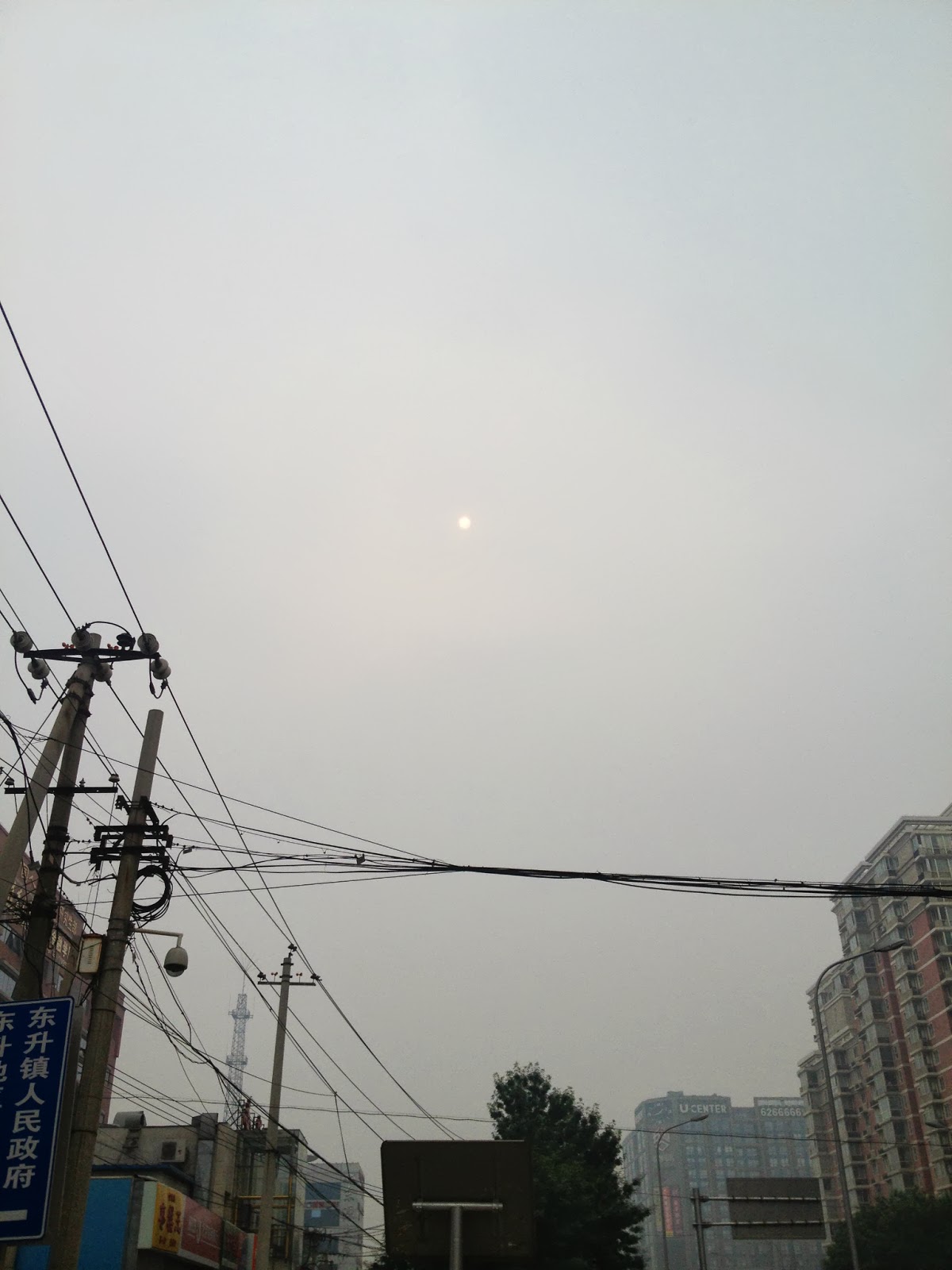
We started the day by taking the subway, which is trivially easy to use, since signage and recorded announcements are in Mandarin and English, presumably to accommodate Olympic visitors. It was as crowded at 8am on a Sunday as New York’s is during rush hour….

We tried to start our visit at Tiananmen Square, and the first obstacle was navigating to it. If you’ve been to Paris, think of the traffic circle around the Arc de Triomphe—6 lanes of nonstop traffic make it impossible to cross the street, so there is a maze of underground tunnels to get between the Arc de Triomphe and the sidewalks of the surrounding streets. Now imagine a whole city laid out that way. Beijing’s main boulevards surrounding Tiananmen are from 6 to 16 lanes wide, and there are no crosswalks, just underground tunnels. It’s possibly the most pedestrian-hostile city center I’ve ever been to: when you emerge from the subway, there are fences all around the island of sidewalk you’re on, and you must engage in a Kafkaesque search to find the one entrance to the underground passageway to get onto a different island. This morning there was some sort of student performance going on, possibly for Children’s Day, so the whole square was closed off. (Tiananmen Square is over 100 acres, so that’s a lot to close.)

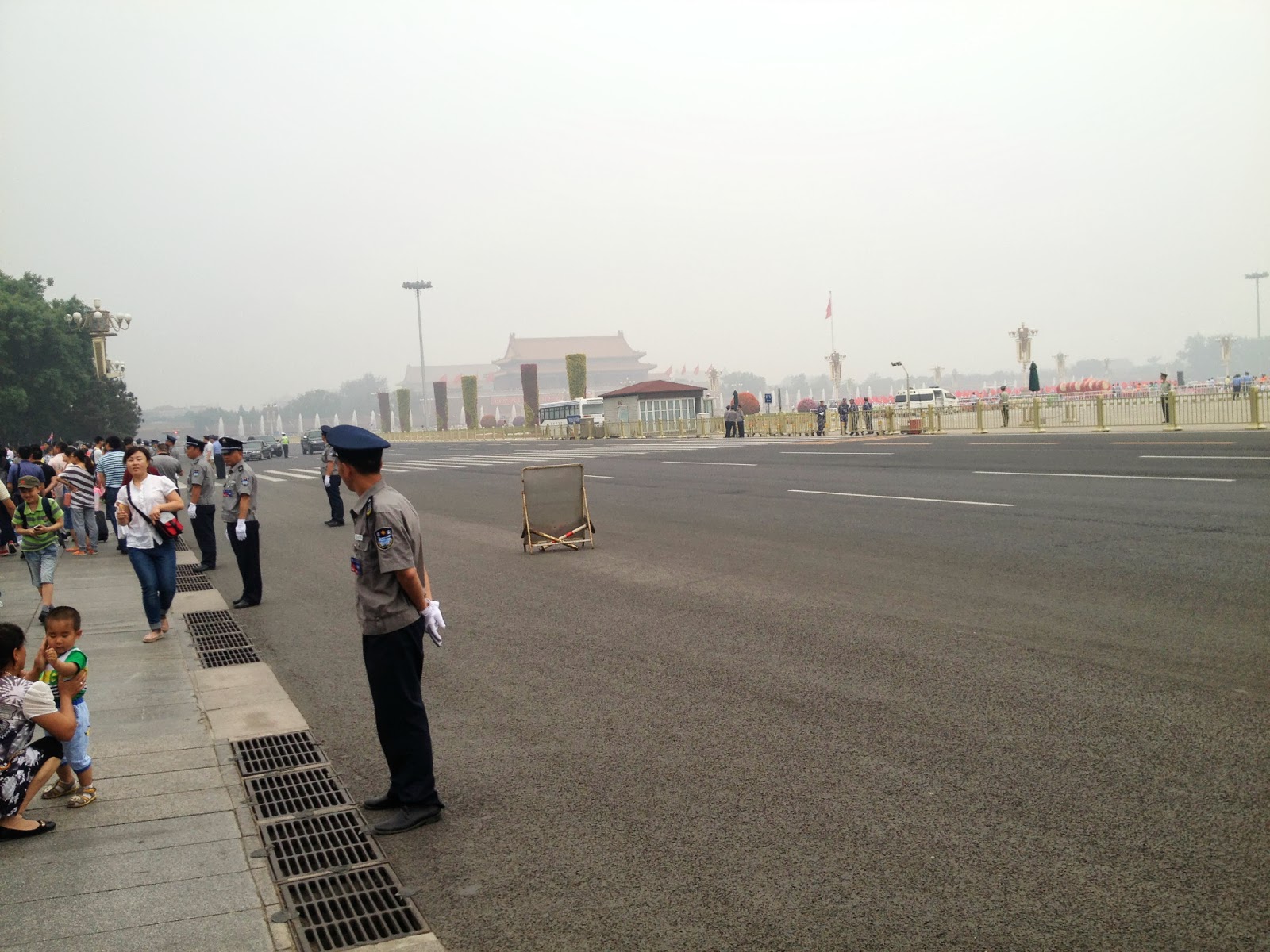
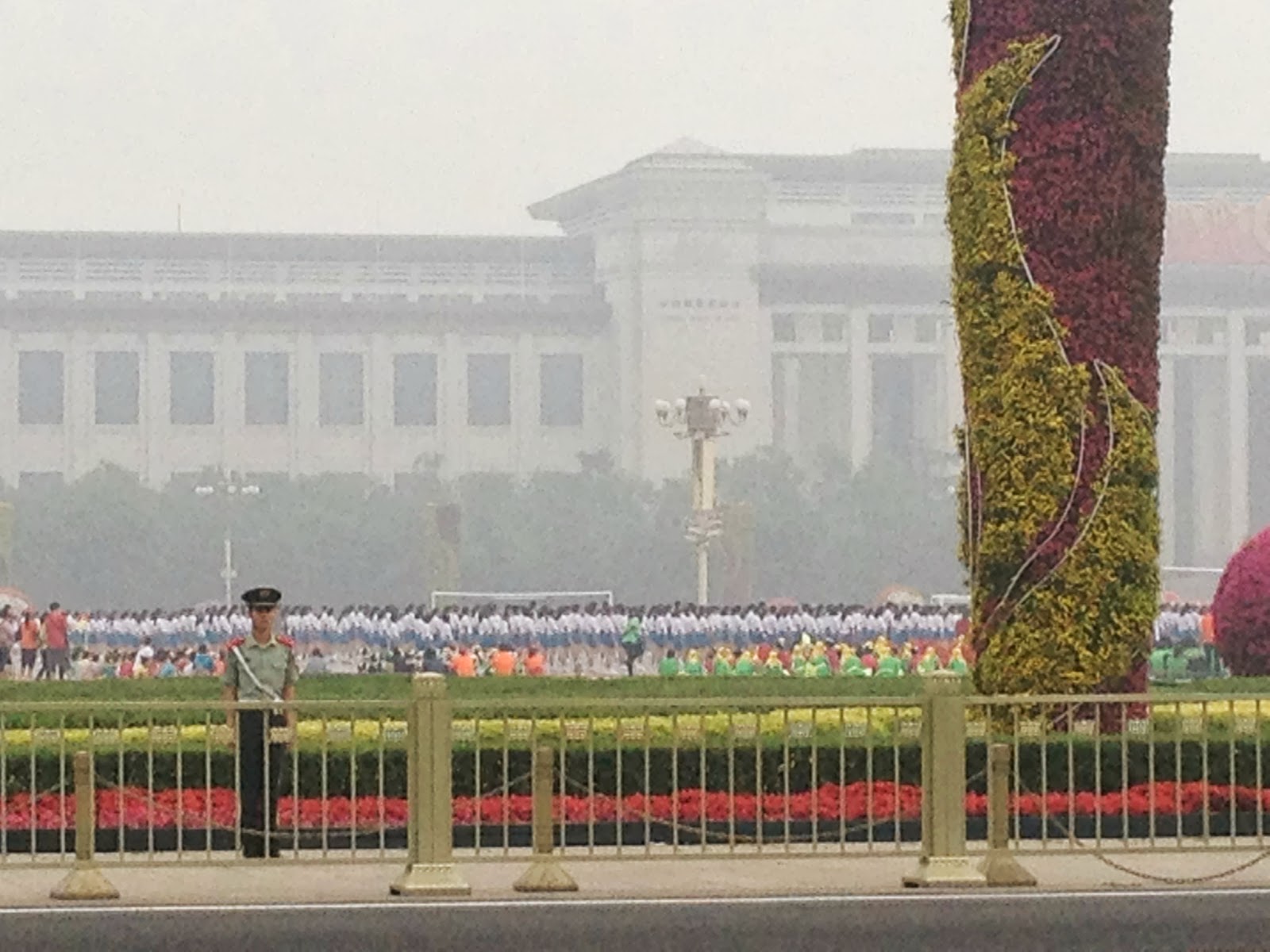
We did get a photo of Mao’s beaming face. The washout on the photo is not my camera, that’s how the air really looked.
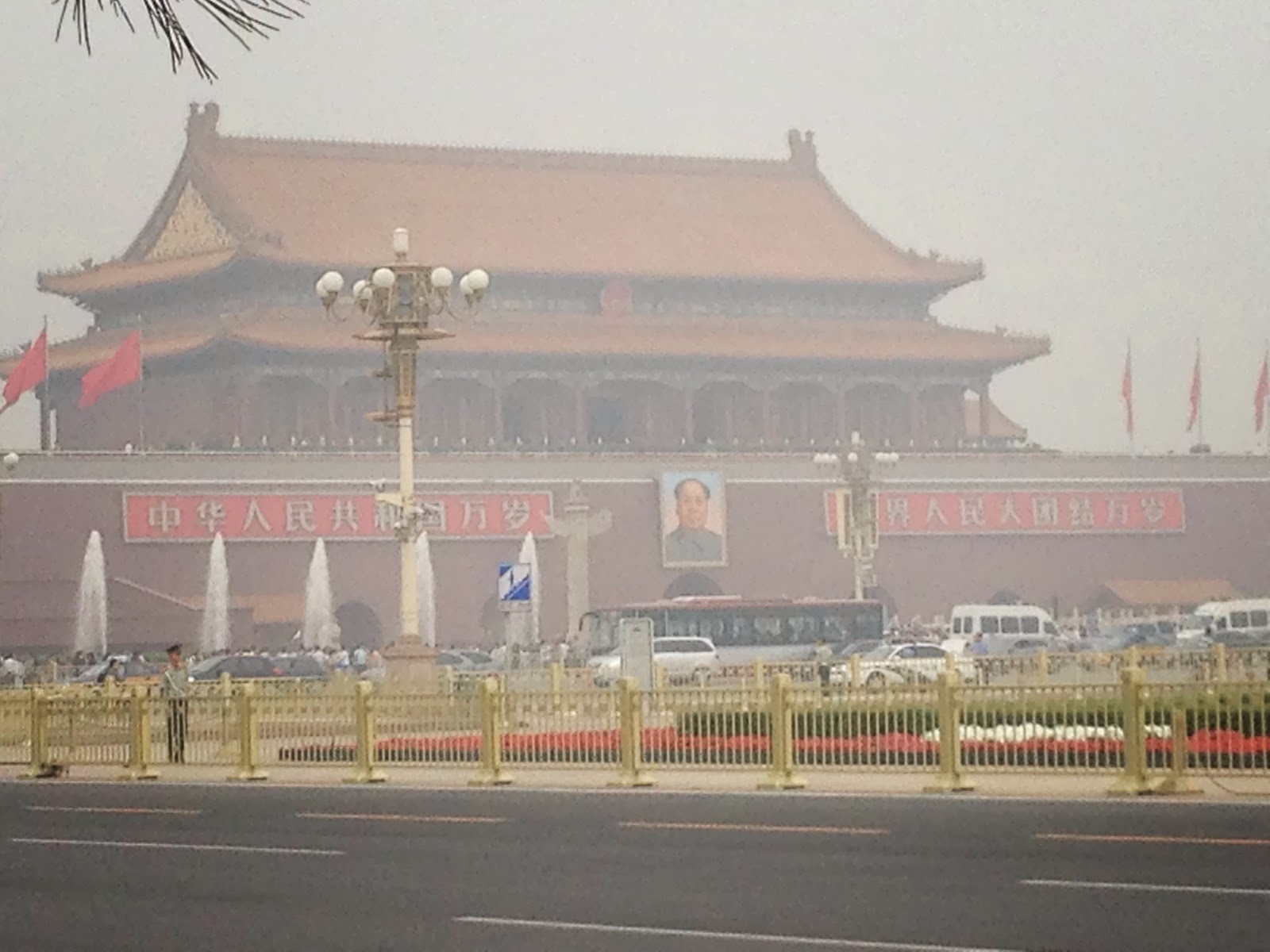
We decided to return to Tiananmen later and go to the Forbidden City instead. This is where the emperor and his court lived until the whole thing was opened up as a museum after the First Republic was established. It’s a monumental set of buildings, dating to the 1400s with parts built as late as the 1600s, enclosed in walls and an artificial moat, and it is indeed a city within a city. It’s now a museum complex that you could spend days seeing; we spent about 3 hours. Some shots are below to give you the idea: lots of symmetry, very impressive traditional architecture.
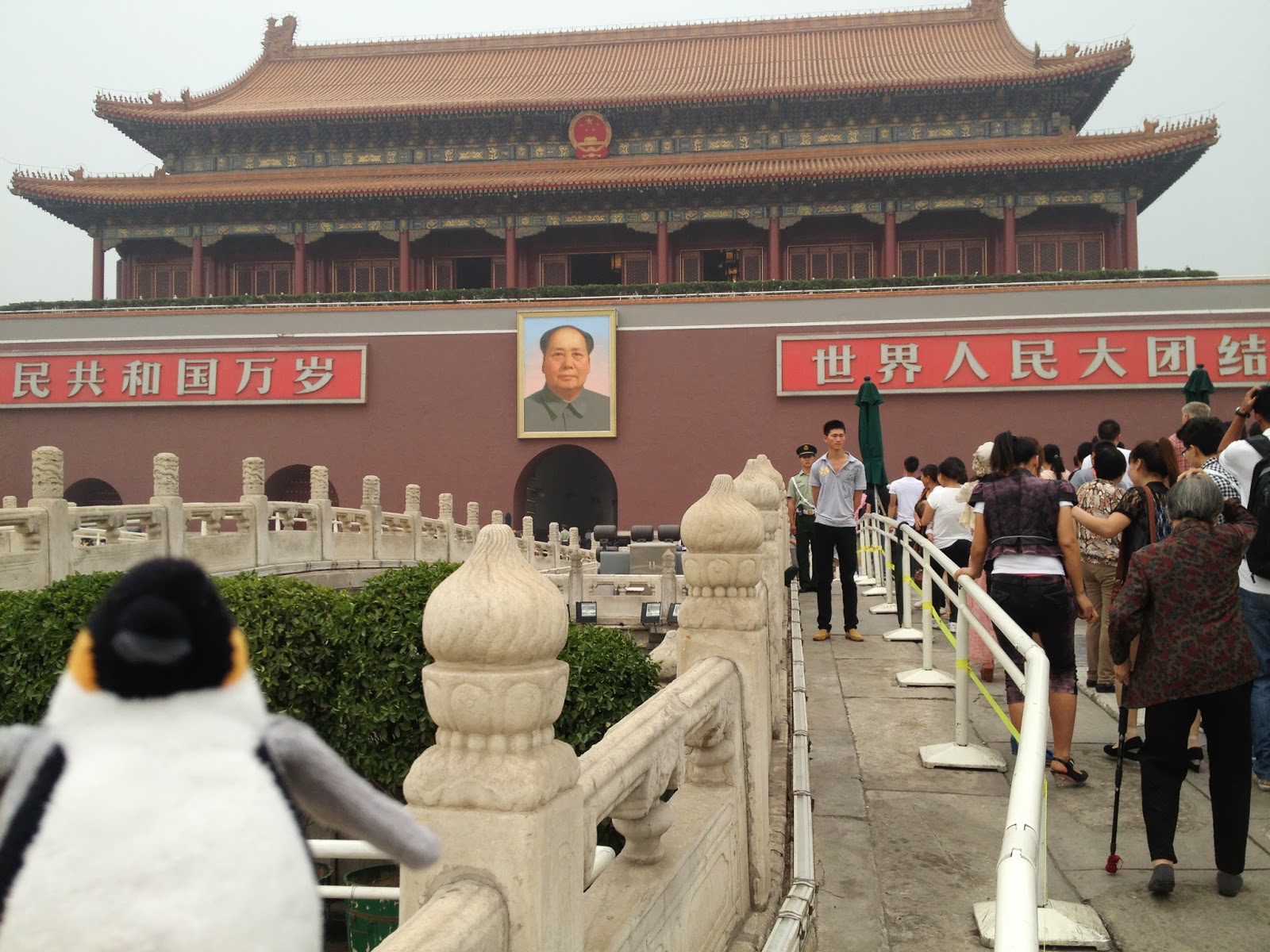
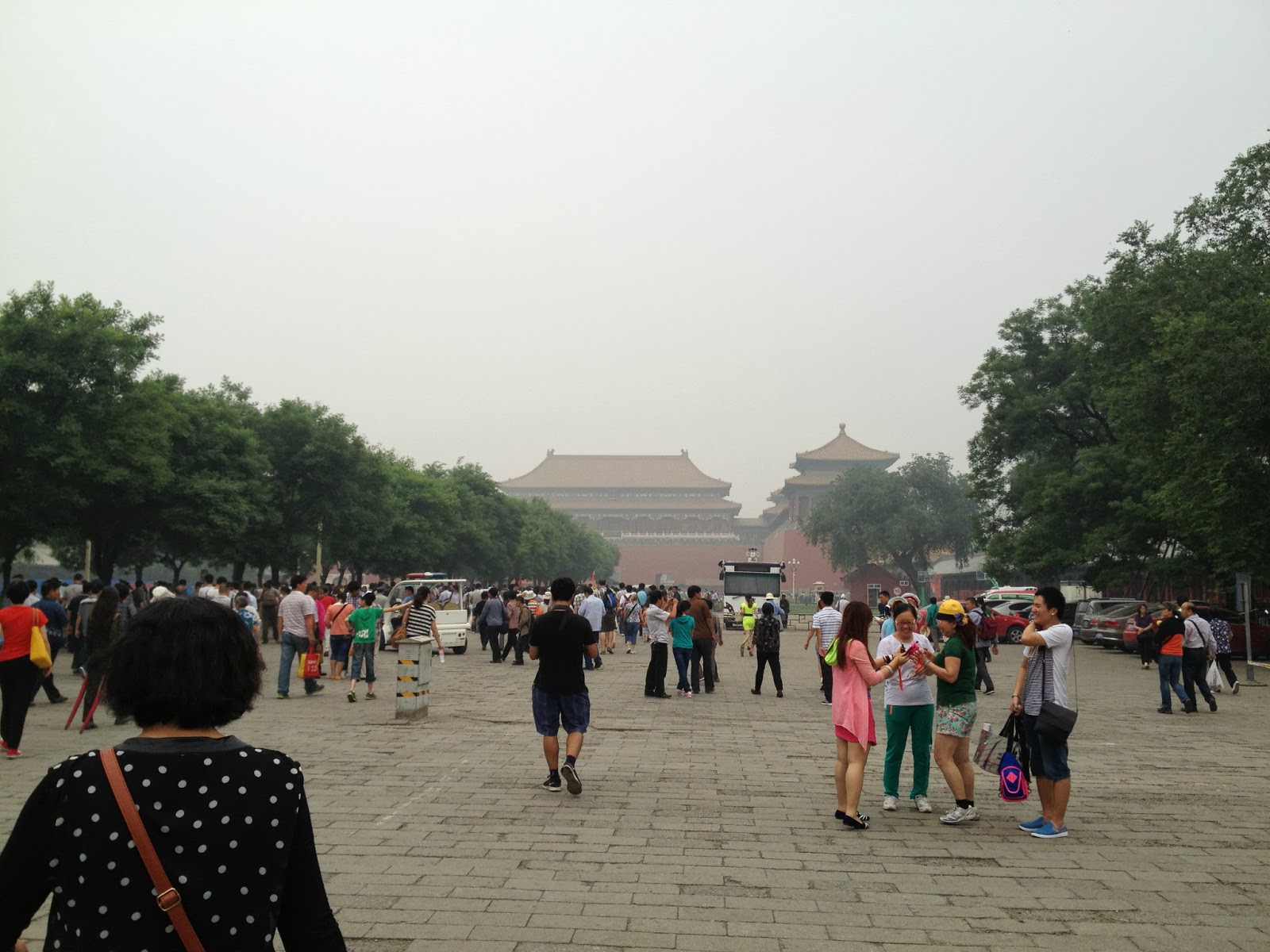
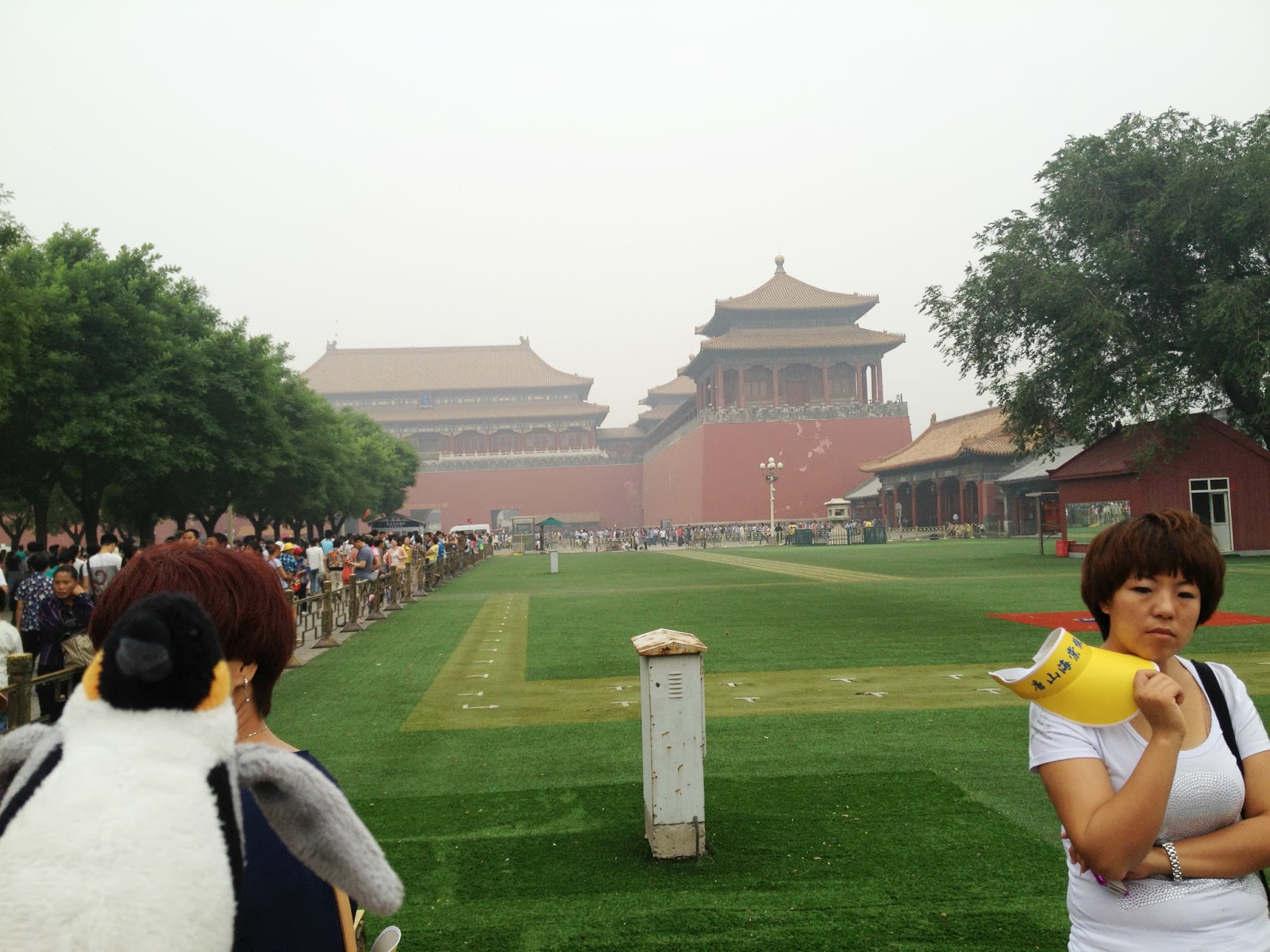
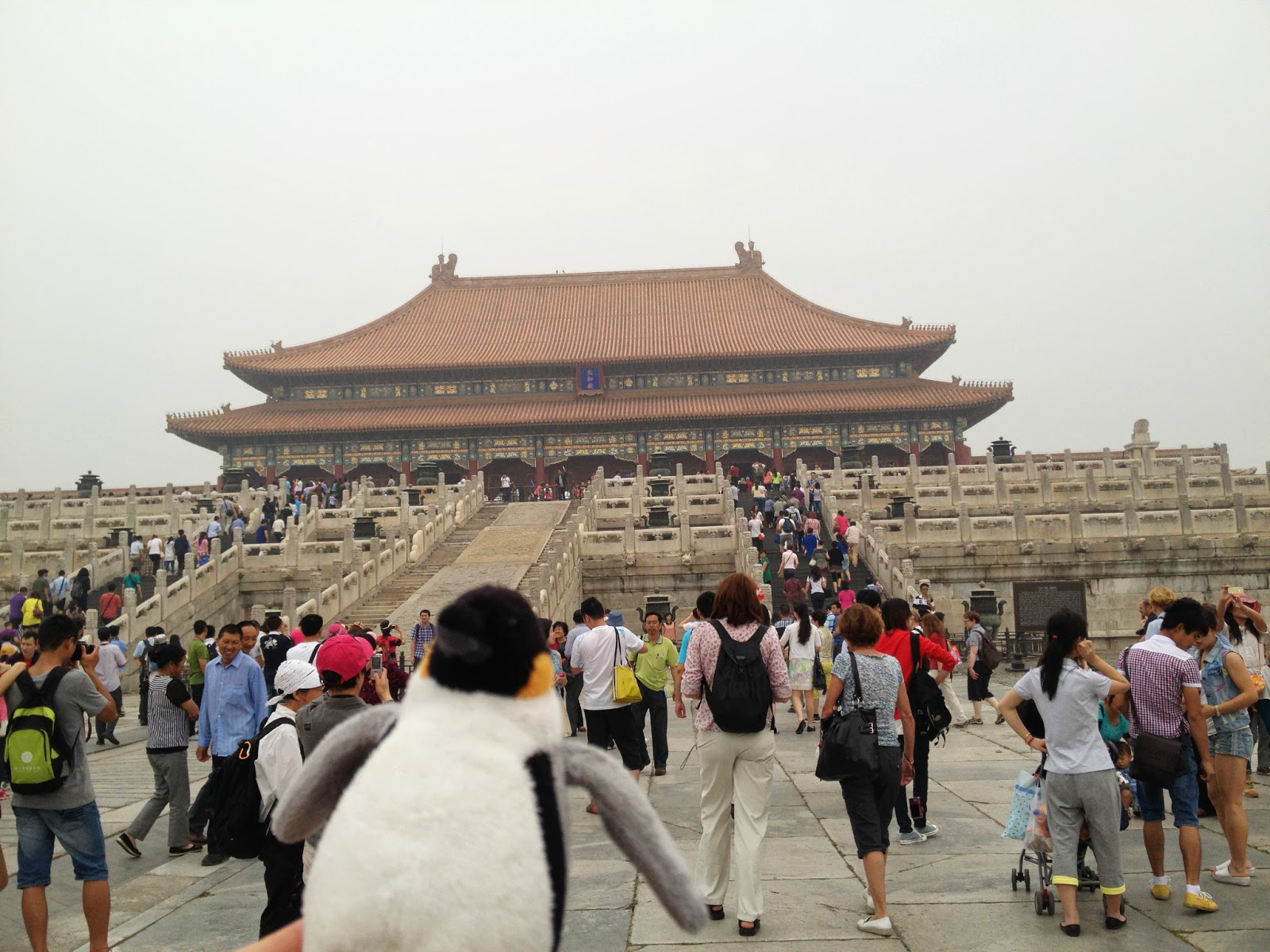
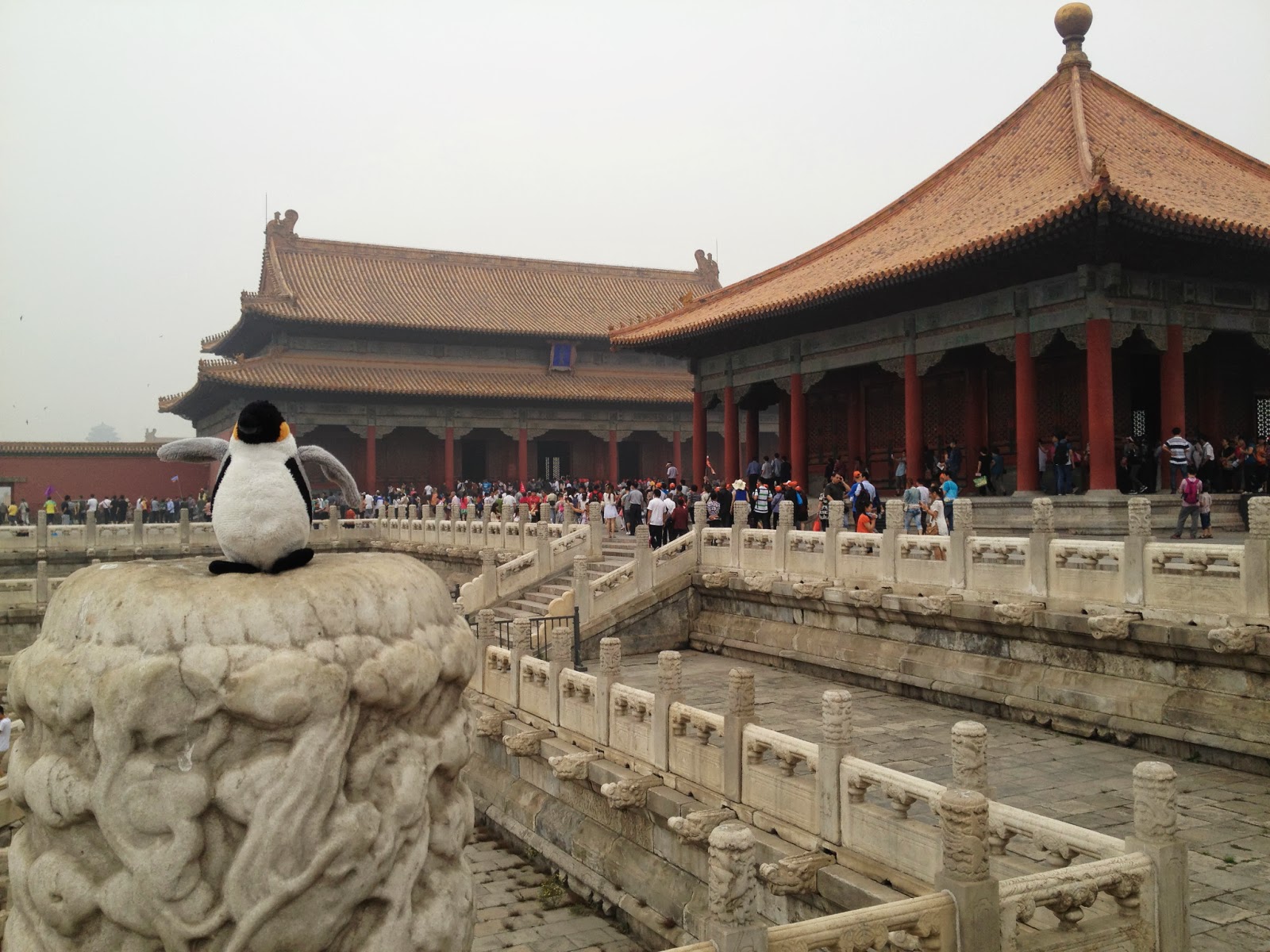
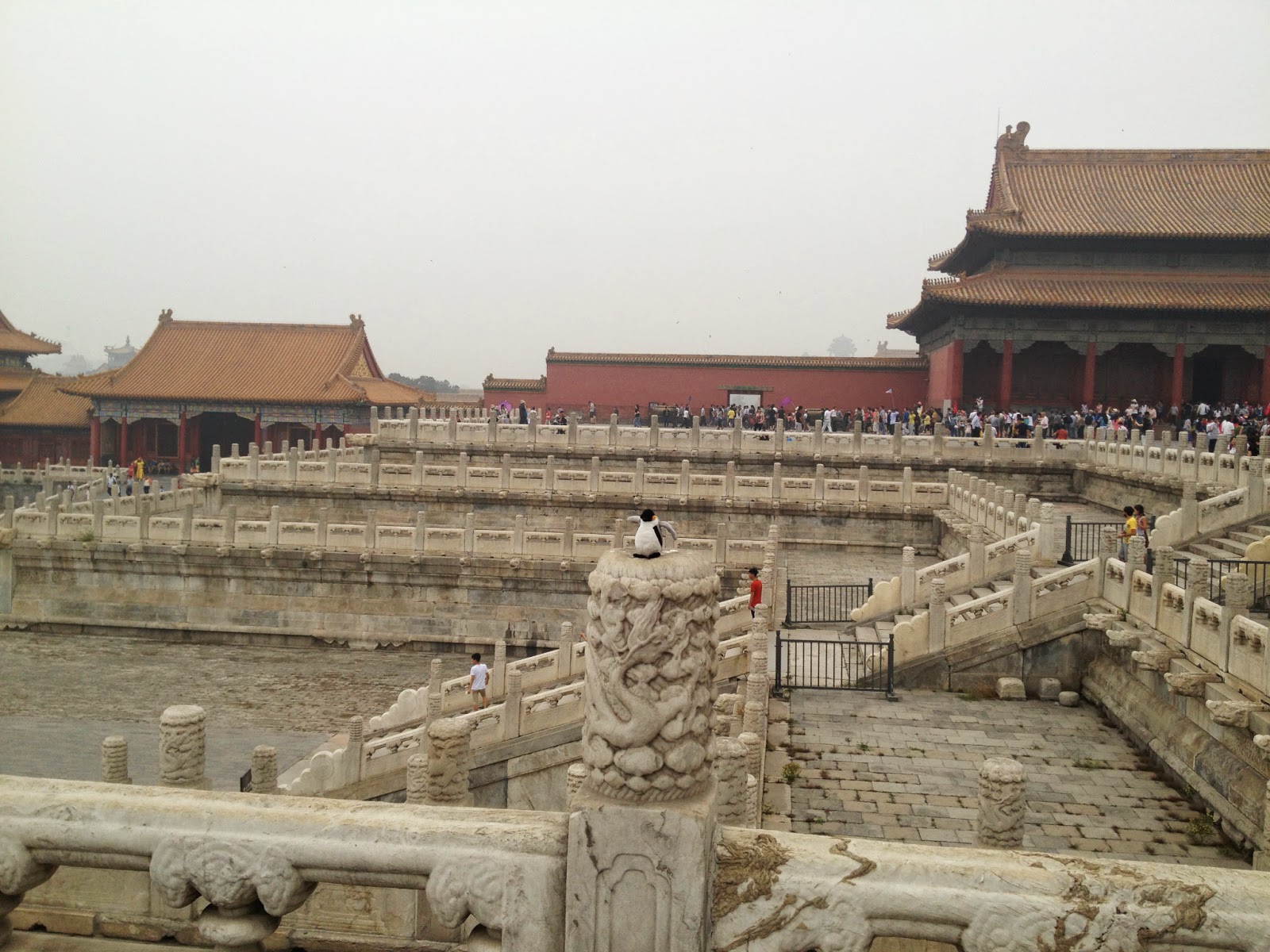
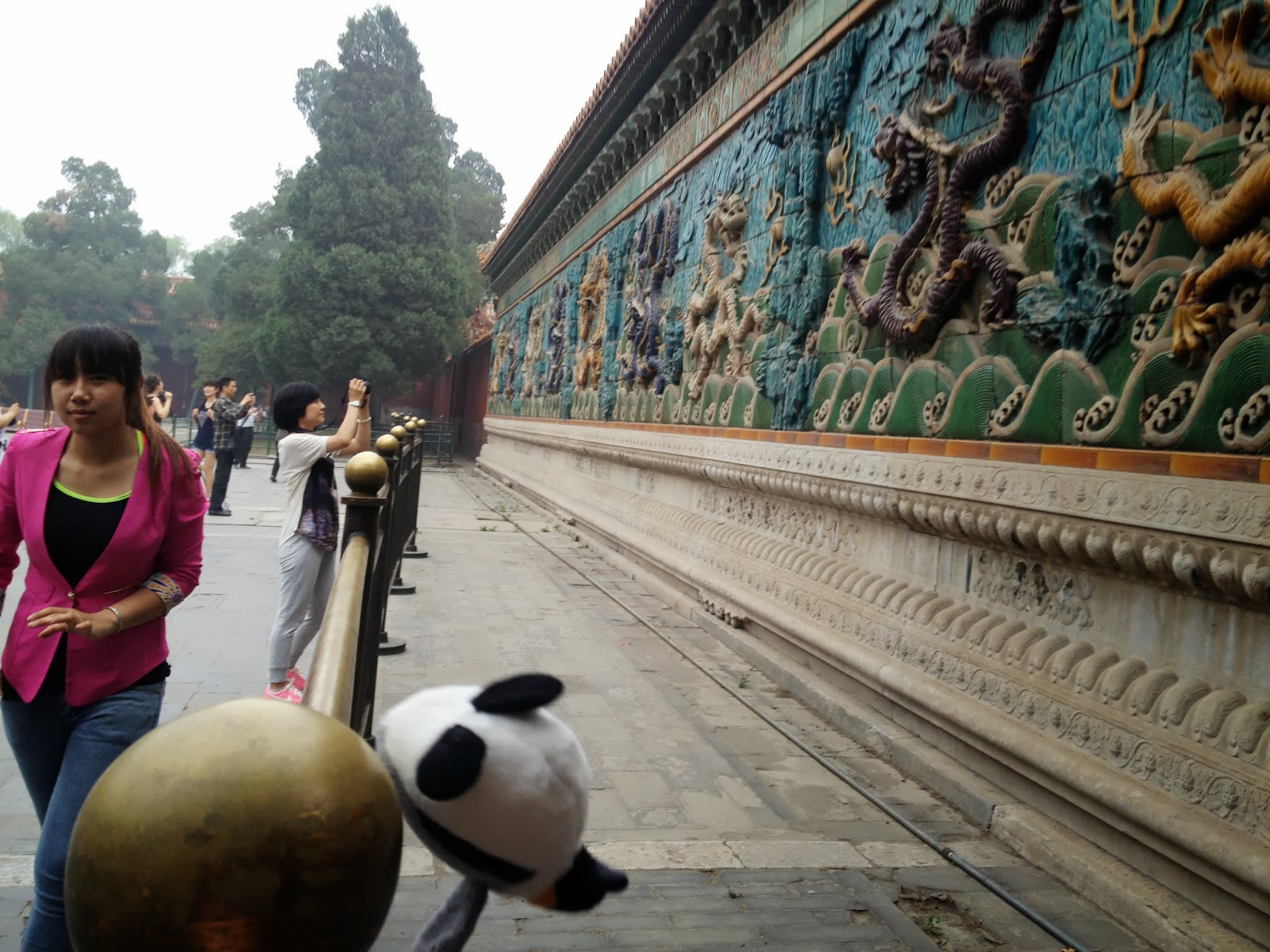
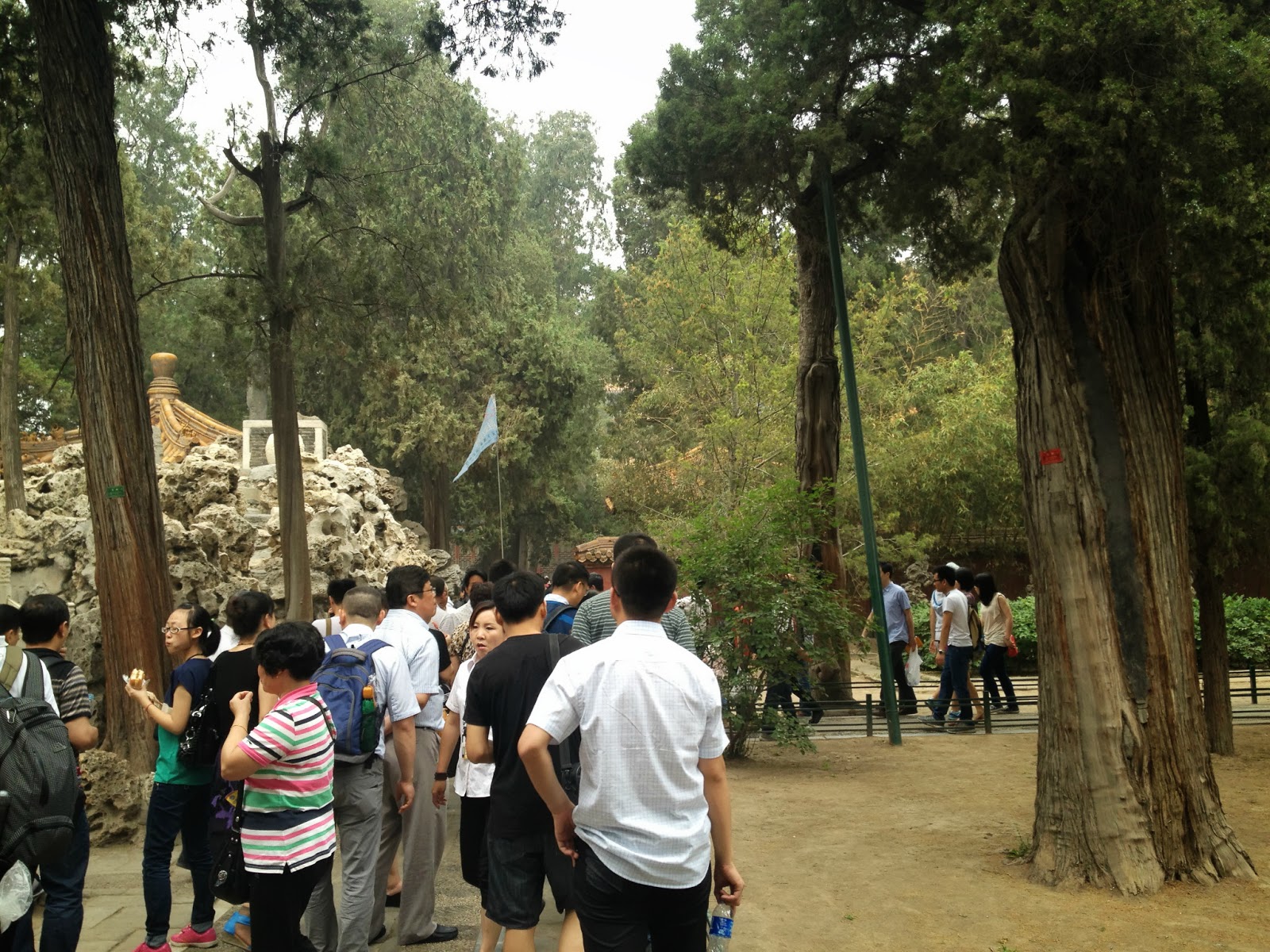
We exited at the northern end and went across the street (i.e. under it) to a park whose hill was created from the excavation of some of the towers at the corners of the Forbidden City…
, whose artificial hill is made from the excavation required to build the Forbidden City and its surrounding moats. All the dirt was, of course, moved manually.](/assets/img/2013-06-01-beijing-2/IMG_1890.jpeg)
We climbed the stairs —about 900 feet vertical—to the pavilion visible at the top of the hill. The view would have been great if you could see more than half a mile in any direction.
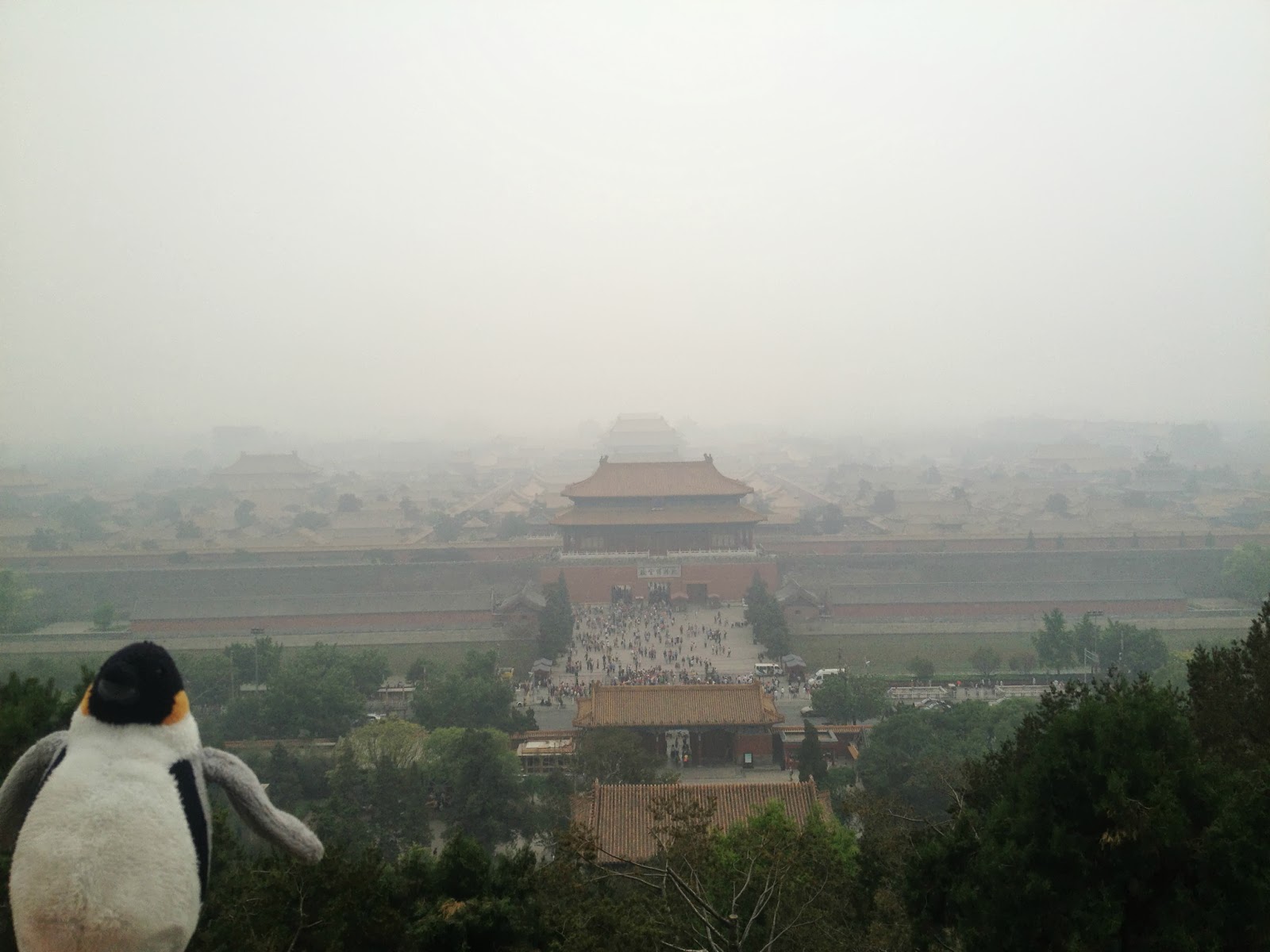
We climbed down the stairs on the back of the hill and into a maze of hutongs, the little alleys that made up Beijing life before most of them were razed to make room for large boulevards and modern buildings. The hutongs are fascinating: each set of alleys is a self contained community with houses, various shops, some as simple as a stove stuck in an alcove or a few shelves of assorted merchandise, and so on. Wandering the hutongs was by far the most interesting part of my visit.
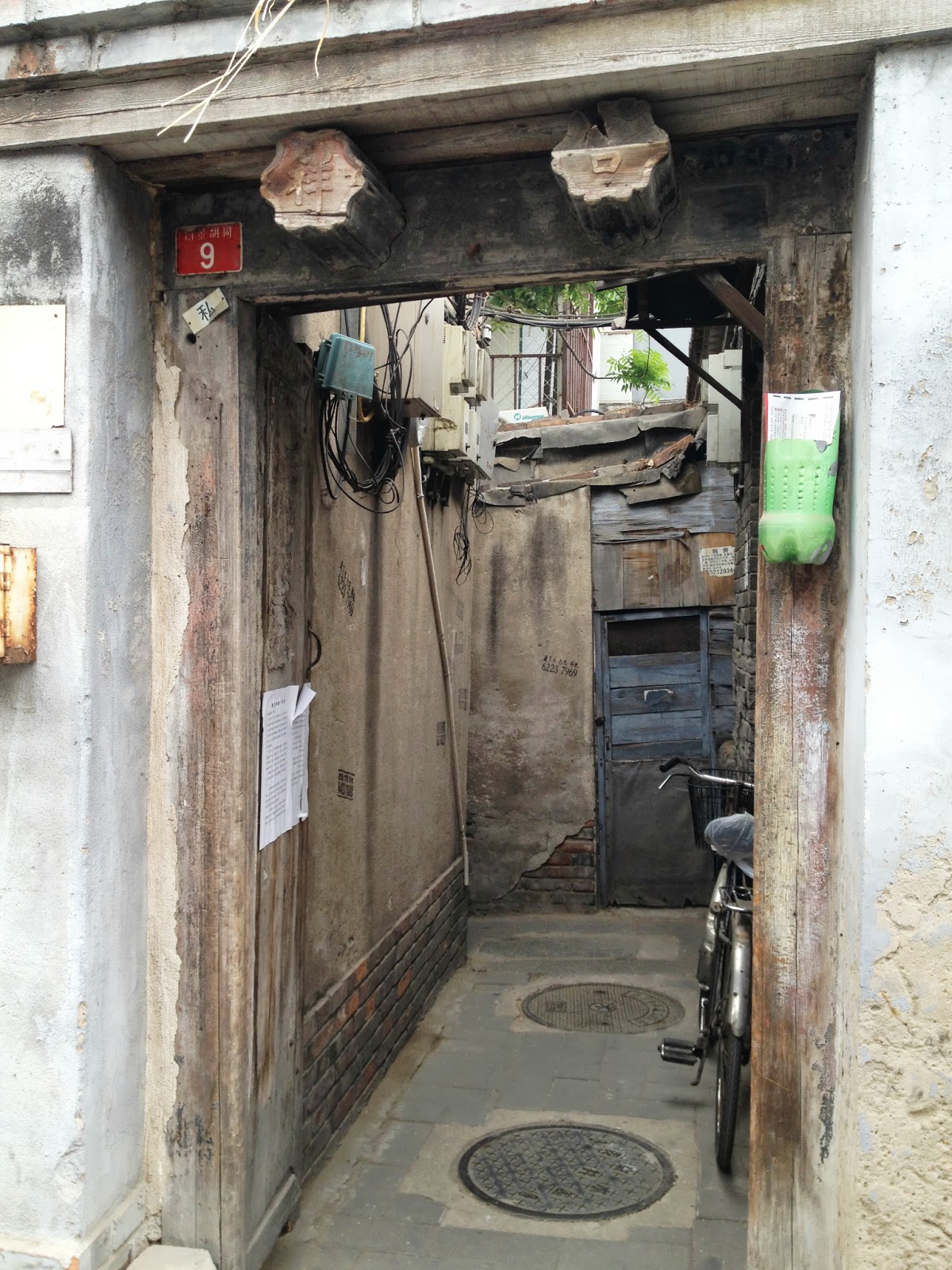
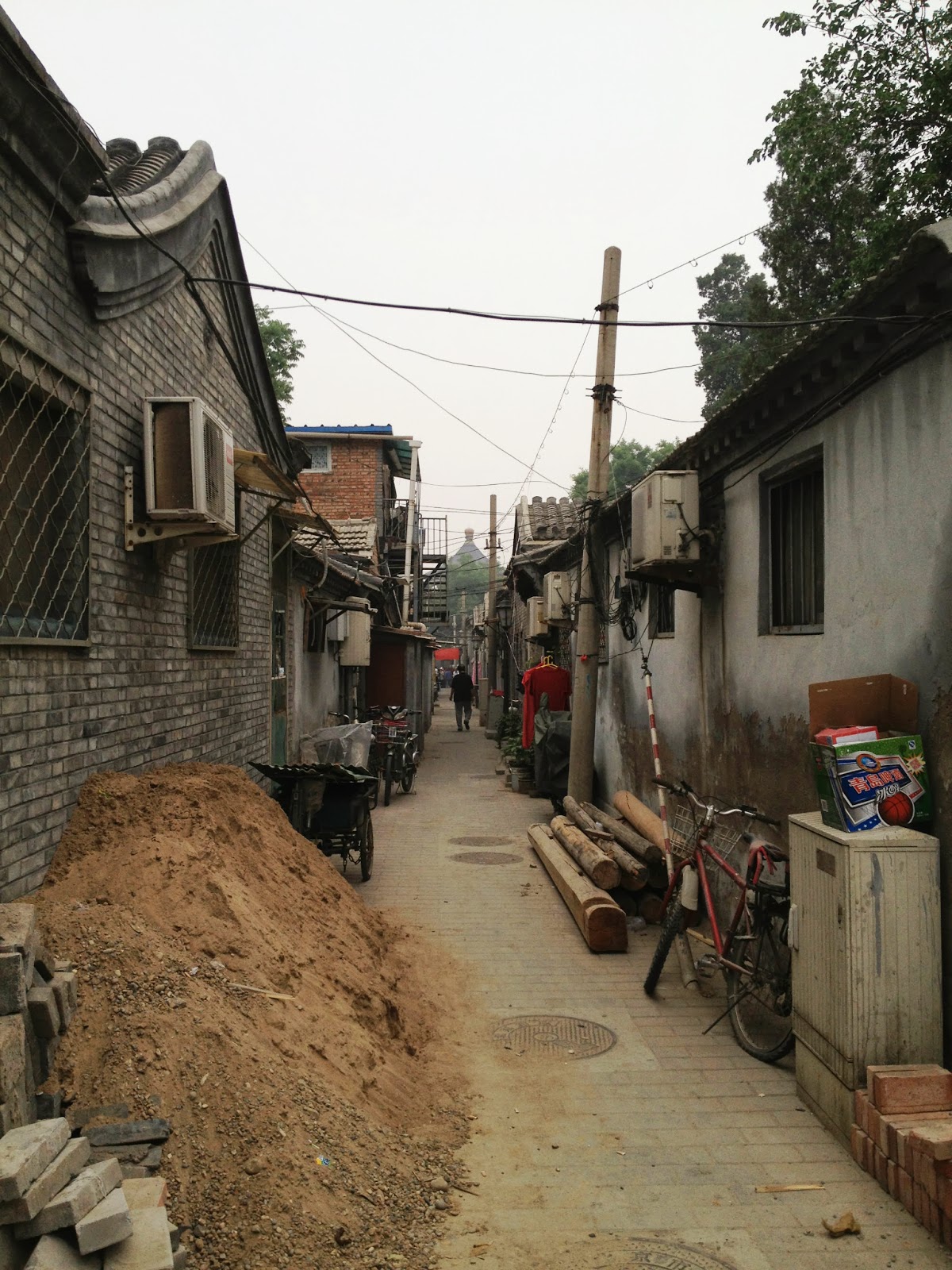
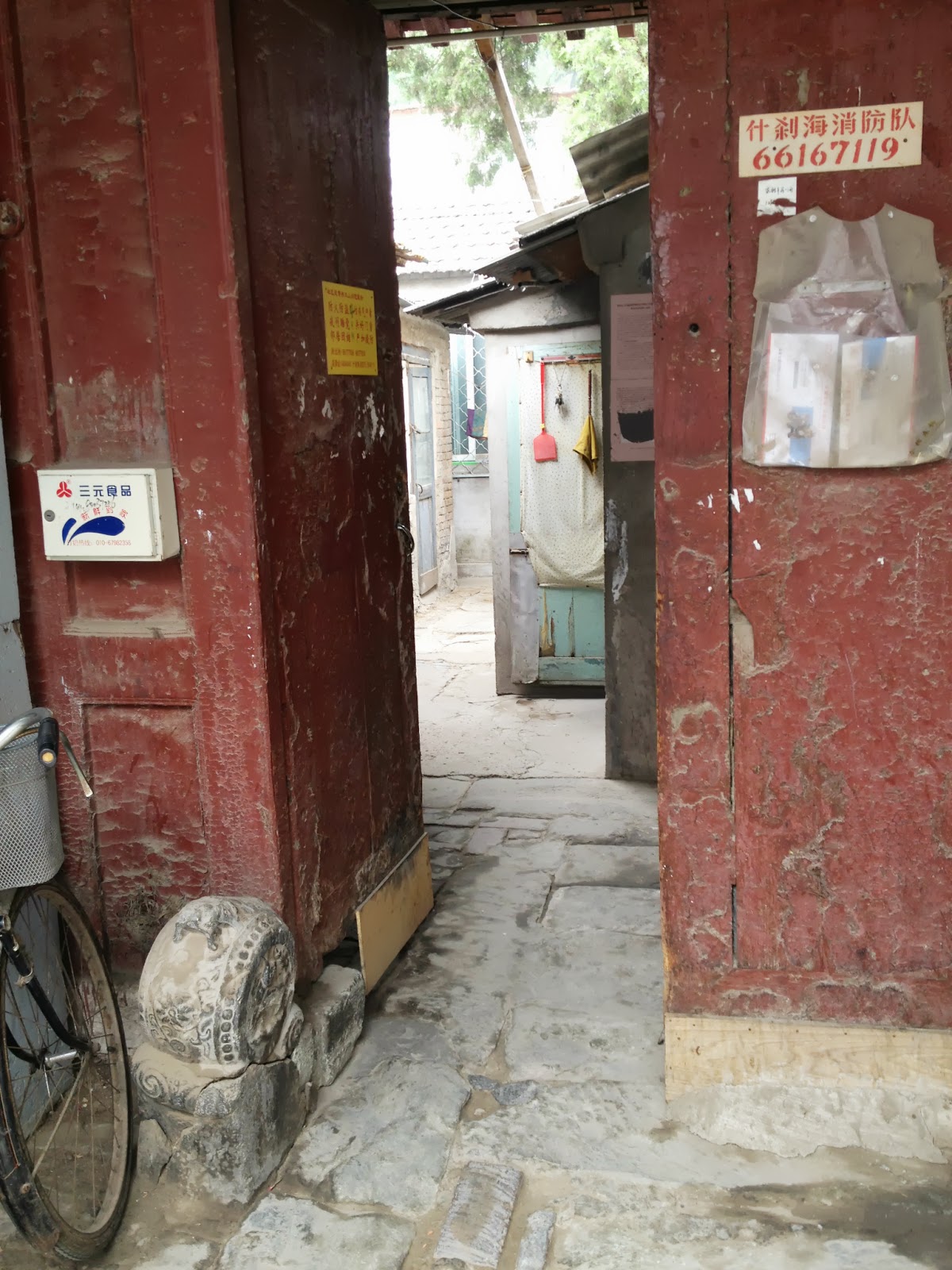
A line had formed outside one small opening that appeared to contain a table where dough was being rolled out and a couple of ovens where seeded rolls were being baked. I stood in line with the locals and via hand gestures I was rewarded with half a dozen fresh-out-of-the-oven rolls for the equivalent of 50 cents.
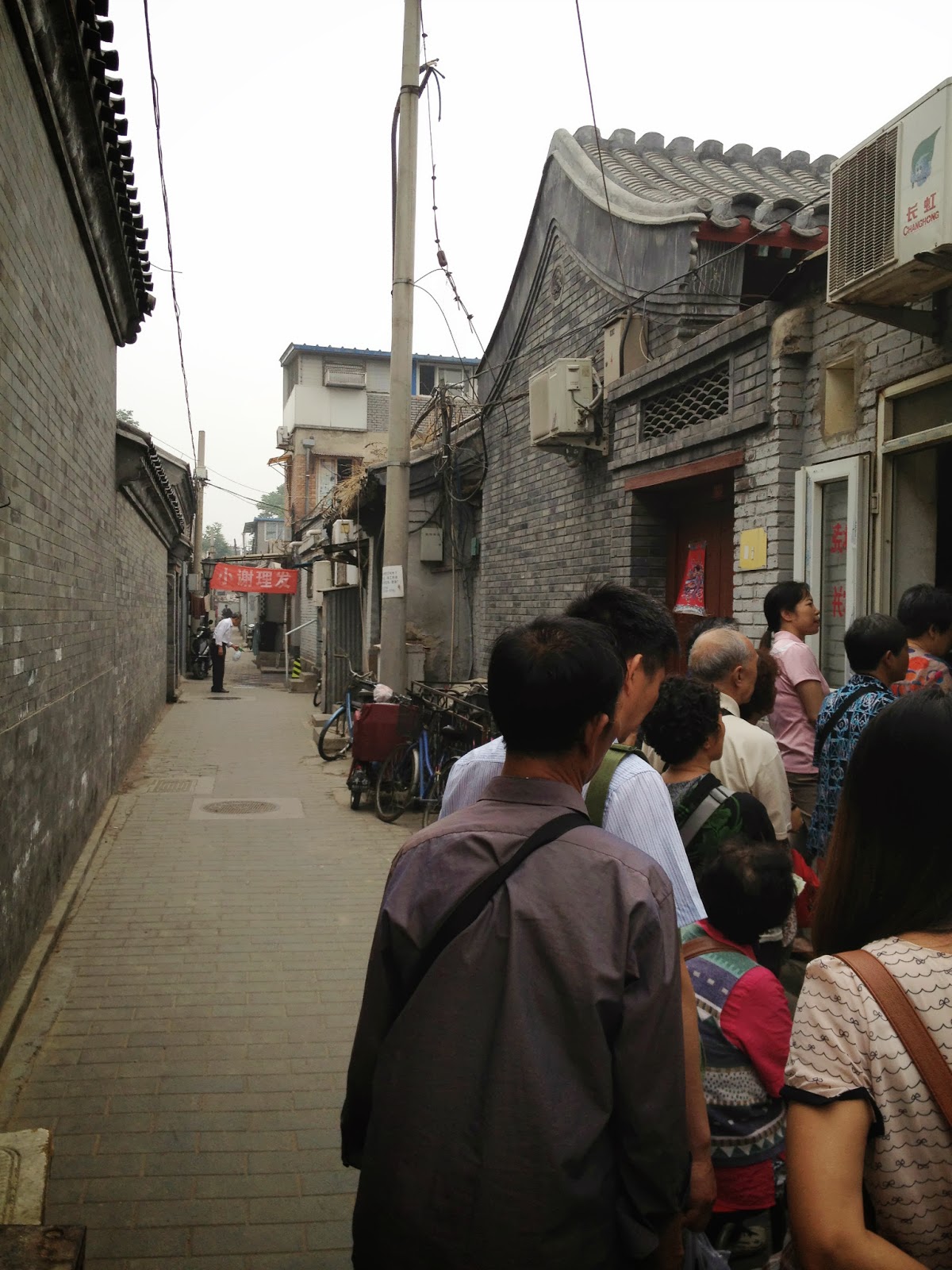
We continued over to Behai Park, which has a nice waterfront along some artificial lakes that are very popular with the locals…
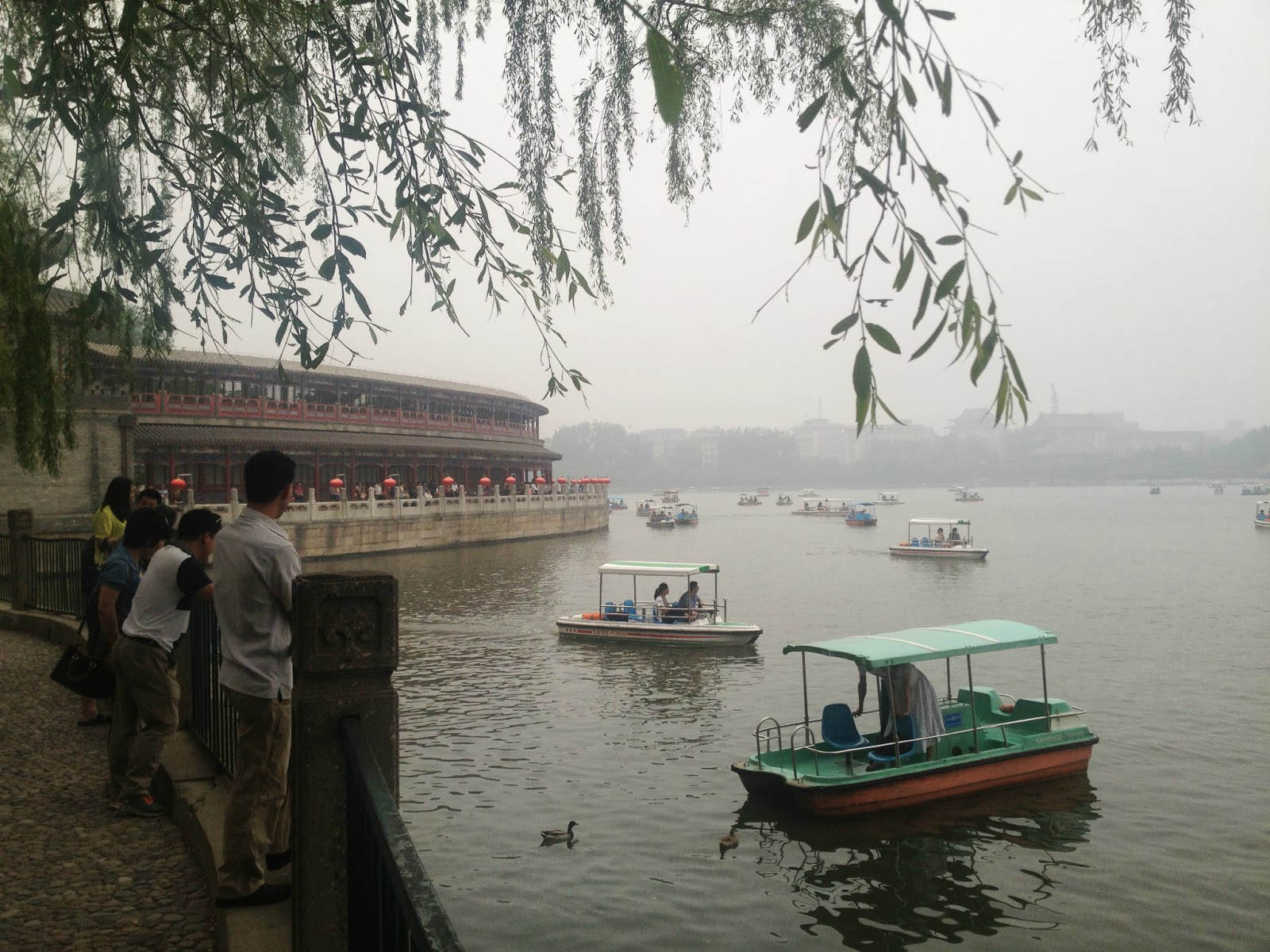
…and thence to the Luogu Alley “nouveau hutong”, which is less traditional as it has gone upscale and is actually one of the few streets in Beijing that is pleasant to just walk along and observe the street life. Penguin and I had a beer at a terrace overlooking the alley. Well, mostly I had a beer.
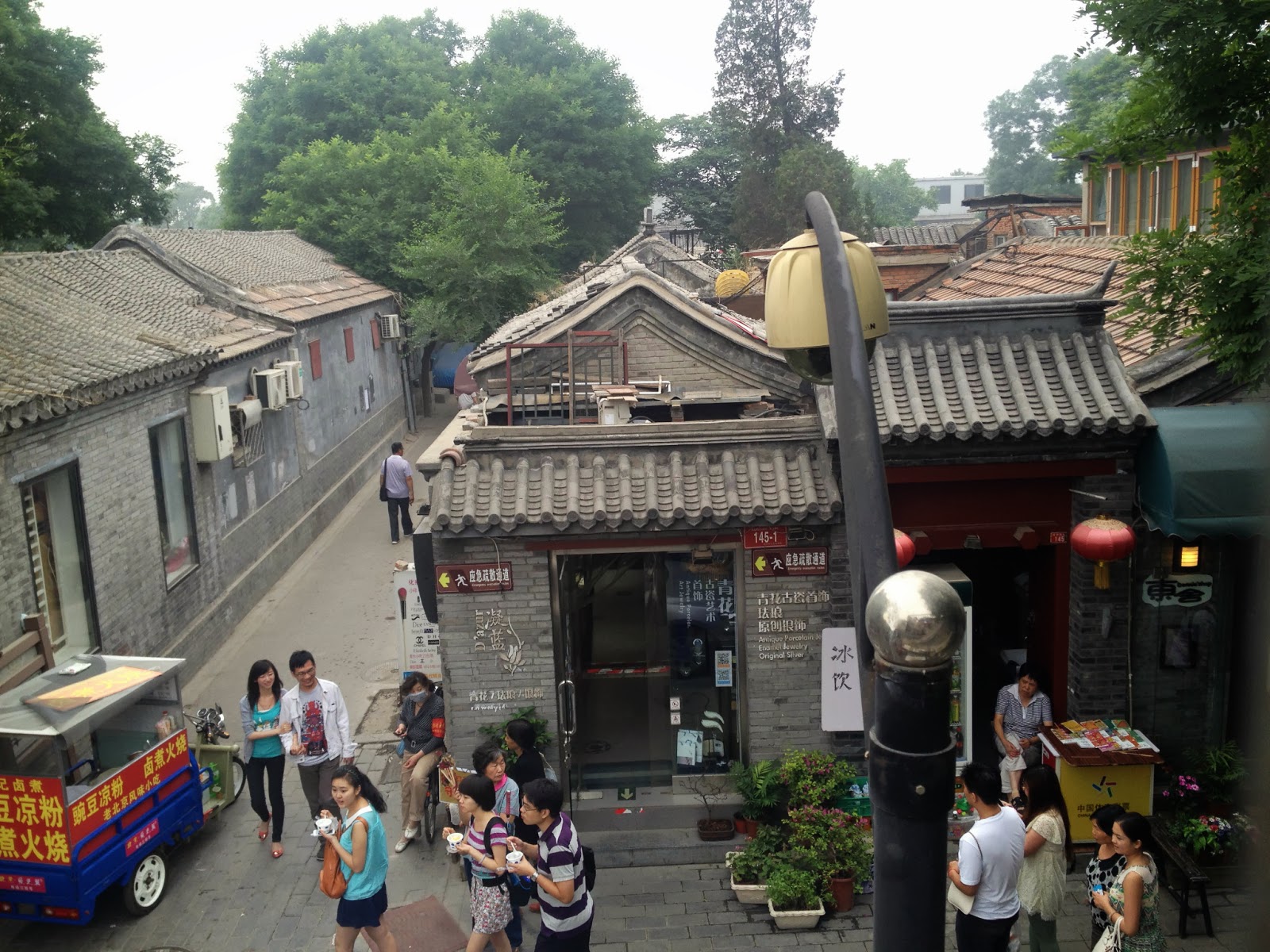
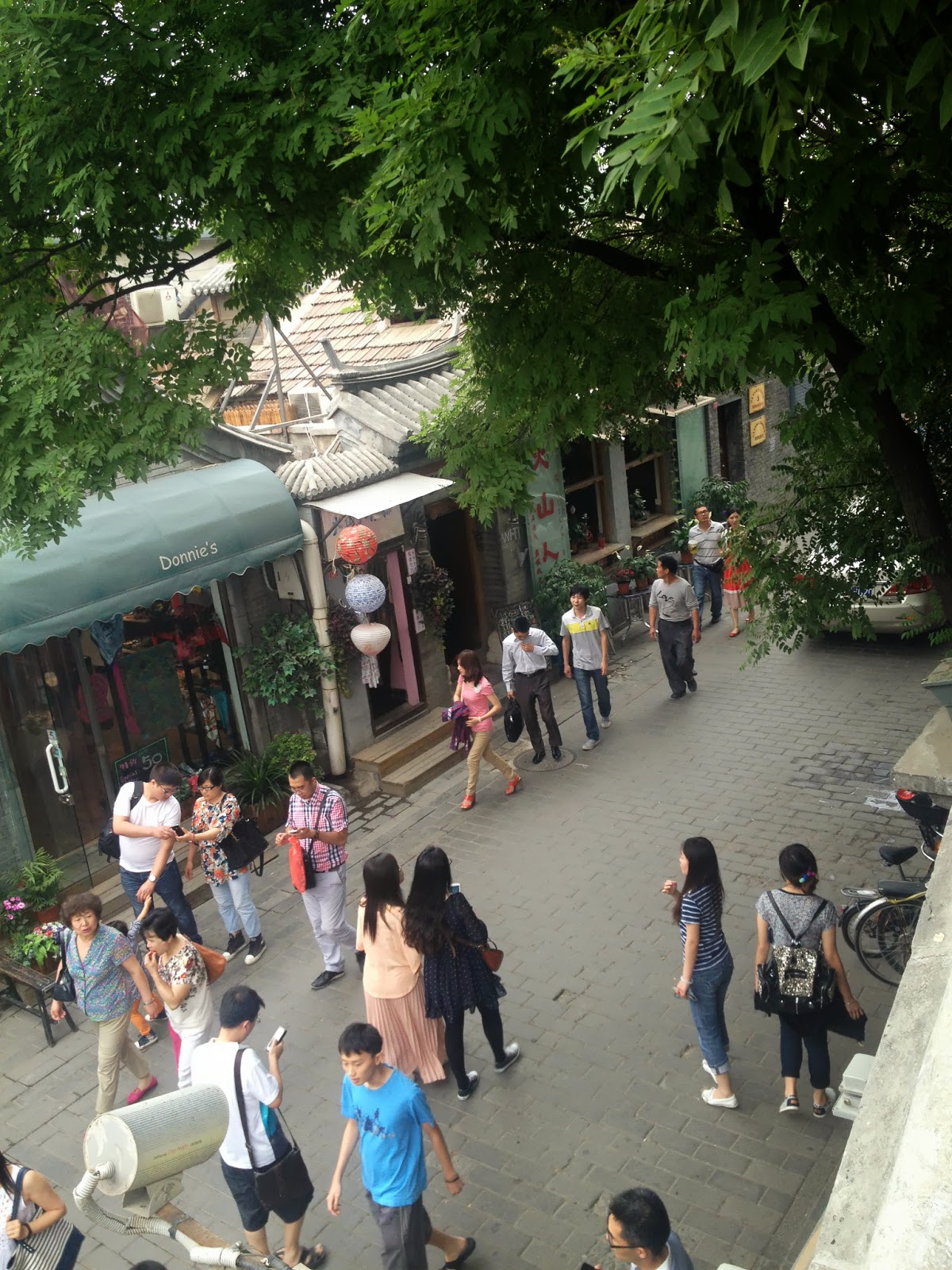
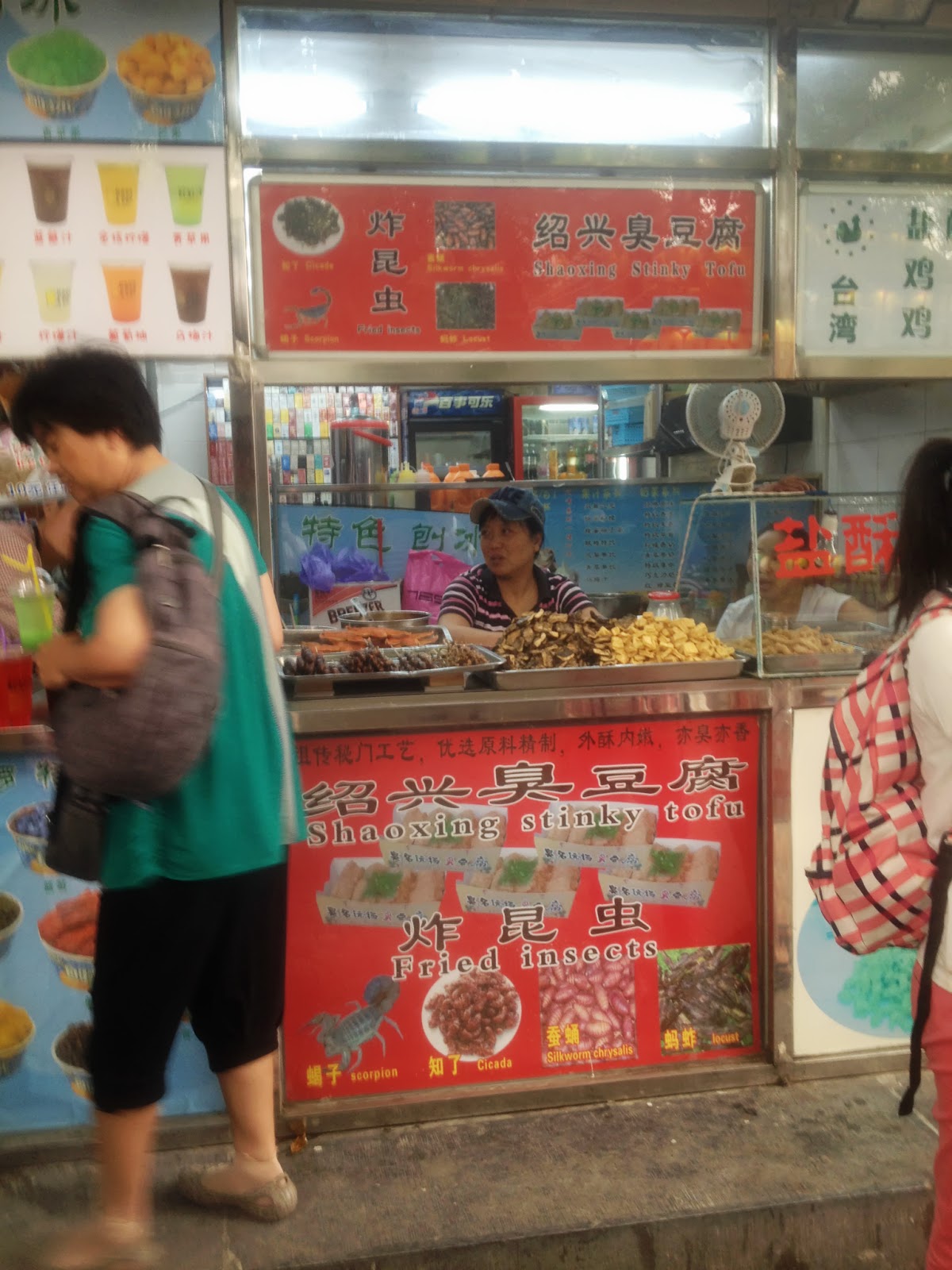
Since it wouldn’t be a trip to Beijing without really walking through Tiananmen Square, we found our way to a subway station to go back there. The festivities were now over so we did get to walk the length of the square, and it is immense. The buildings flanking it—the National Museum of China and the Great Hall of the People—are classic Stalinist mega-architecture. Attractive they’re not, but impressive for their scale, at least.
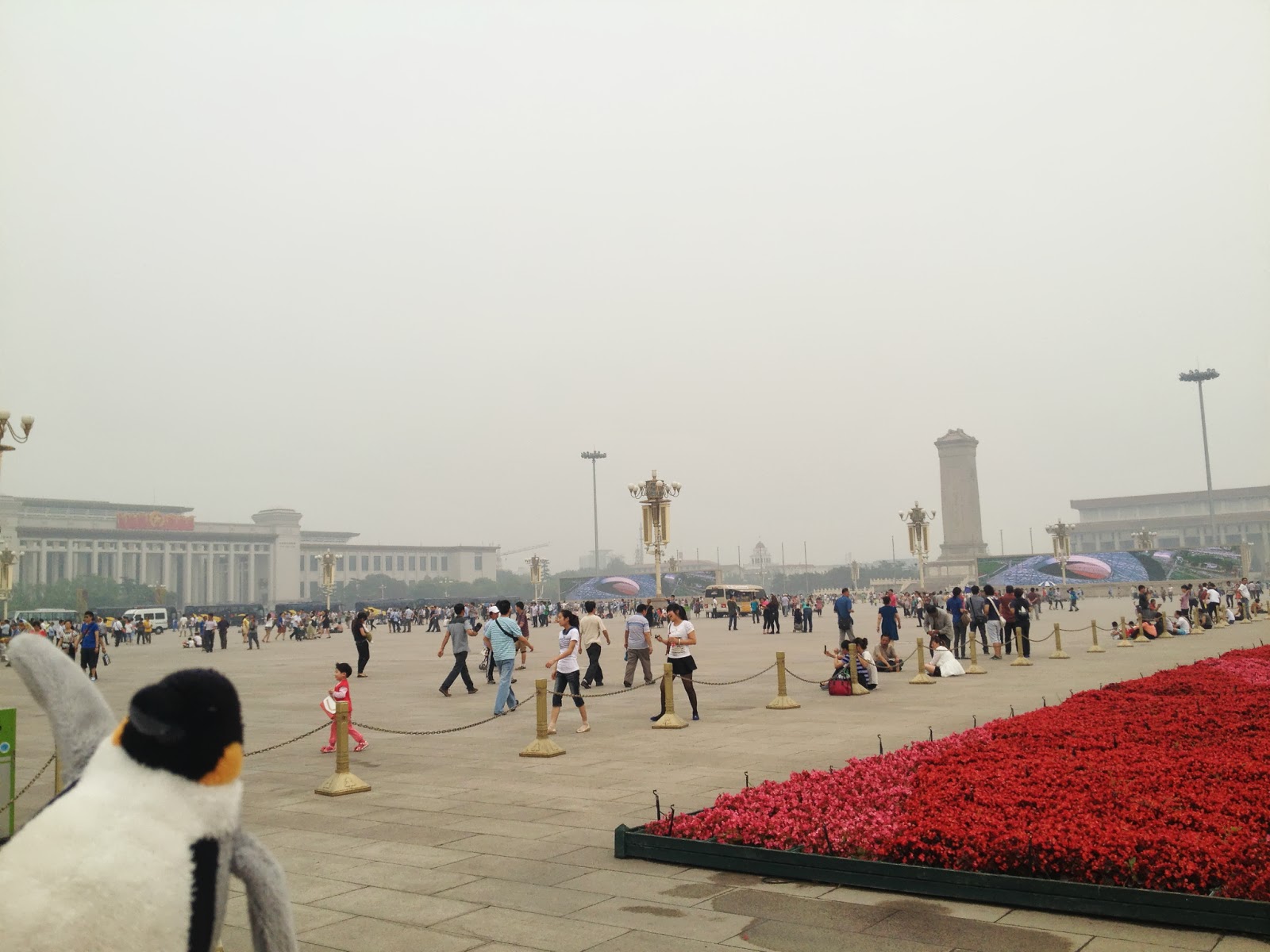
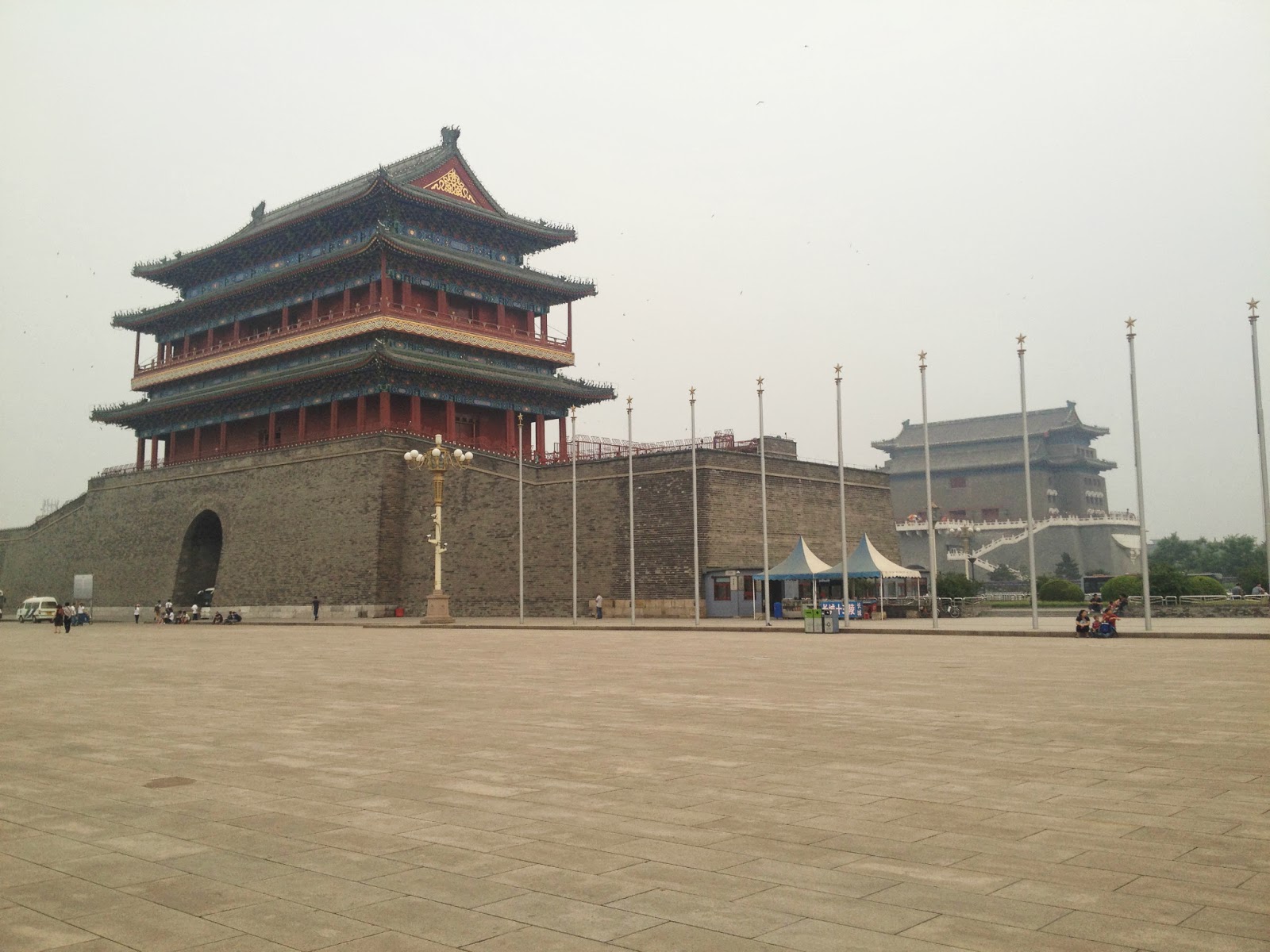
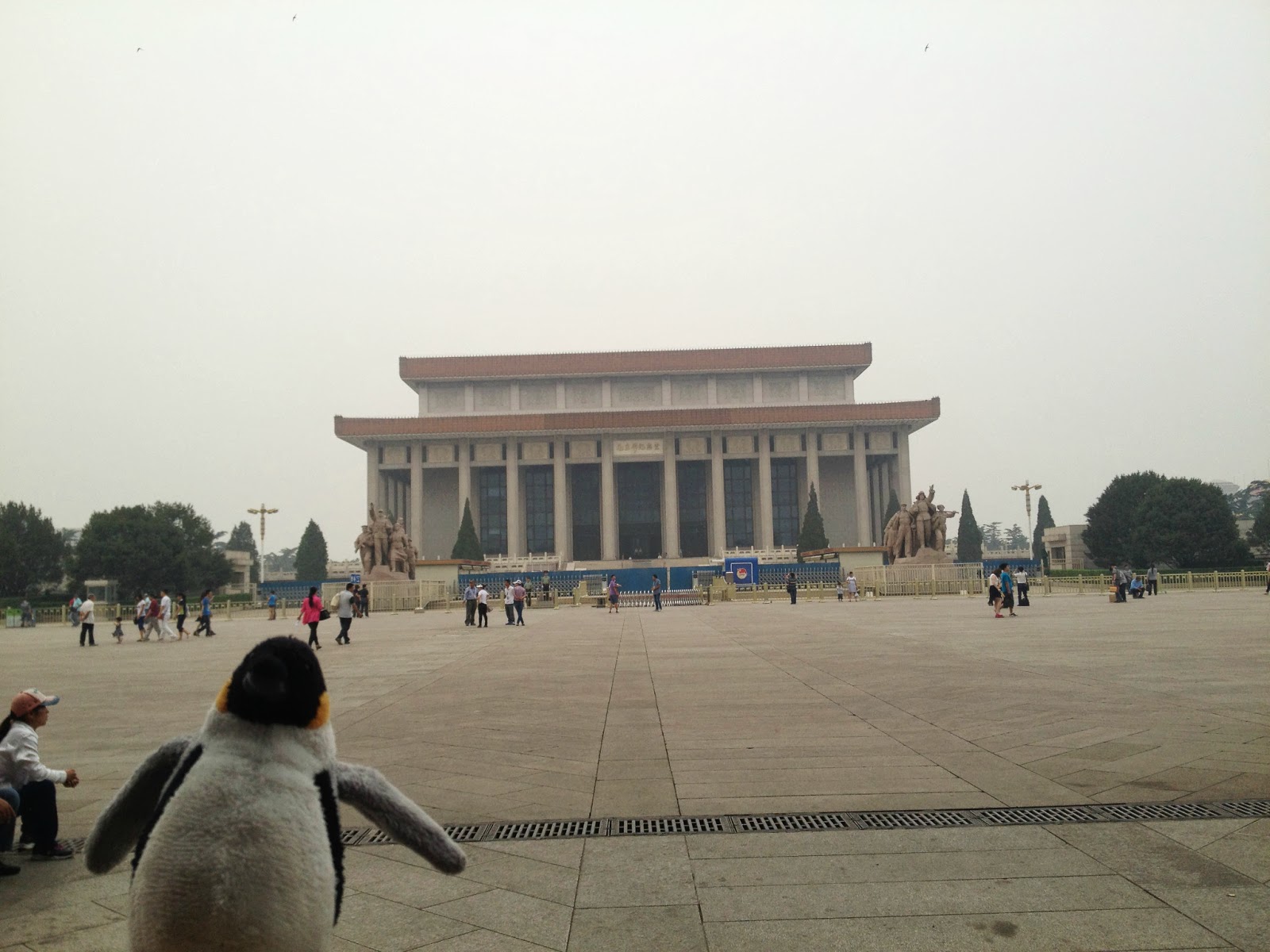
We had wanted to see the pickled corpse of Chairman Mao—as I call it, the Maosoleum—but for some reason it was not open this afternoon as it usually is. So we contented ourselves with a stroll around the square—which is a little like taking a stroll around 100 football fields glued together, paved over, and teeming with people in uniforms; the State is everywhere, and you can’t throw a dead cat without hitting someone in some kind of uniform—before the subway ride home.
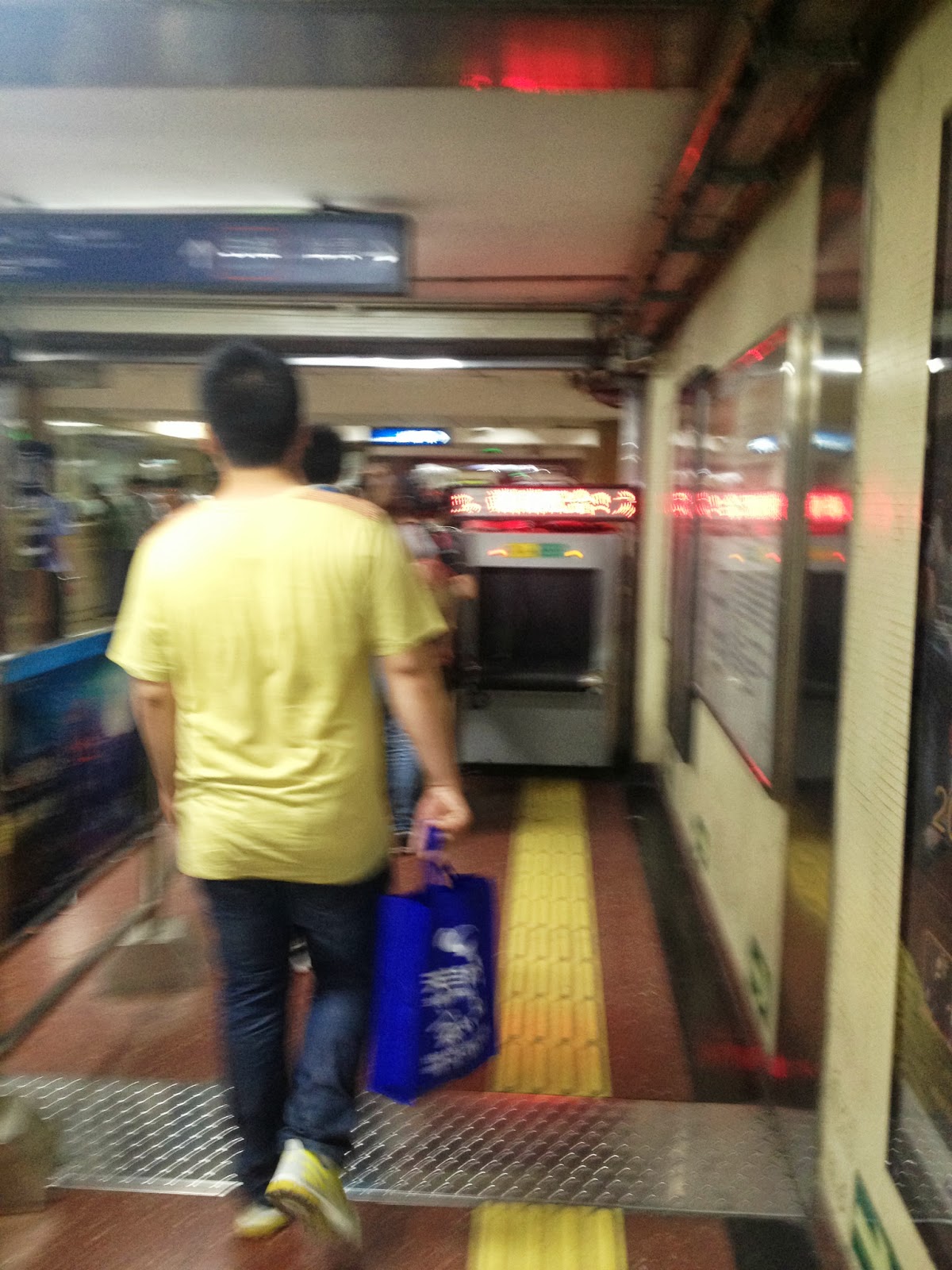
All in all, Beijing is a fascinating city to visit, but not, I must frankly admit, a particularly pleasant one. People fight their way on and off the trains, to the front of lines, and everywhere else; children relieve themselves in public by peeing or pooping into the bushes or the curb, and if one is lucky, the parents will clean up after the child, doglike, so that you never know when you see skid marks if they are dog poop or baby poop—actually, they are always baby poop because in my 16+ miles of walking I saw hundreds of thousands of people but exactly one dog. No quarter is given to pedestrians; traffic signals are mostly ignored, cars honk their way through intersections, bicycles and mopeds thread their way upstream, cross-stream, or more or less anywhere they want to go. The air quality is so bad that the visibility was about half a mile today, and I get the sense today wasn’t particularly bad by local standards since few people were wearing masks.
But it is the largest city in the largest and most populous country on earth, so it was worth seeing how people live here. The hutongs were fascinating. Wei said when he was growing up, all of Beijing was basically like that. I’m not opposed to progress, and the non-modernized hutongs I walked through were definitely primitive, but you have to wonder about the tradeoff that’s been made here.
Looking forward to getting outside the city a bit with a Great Wall visit on Tuesday. Tomorrow is the event at Tsinghua University all day, so I’ll report if anything interesting happens there…